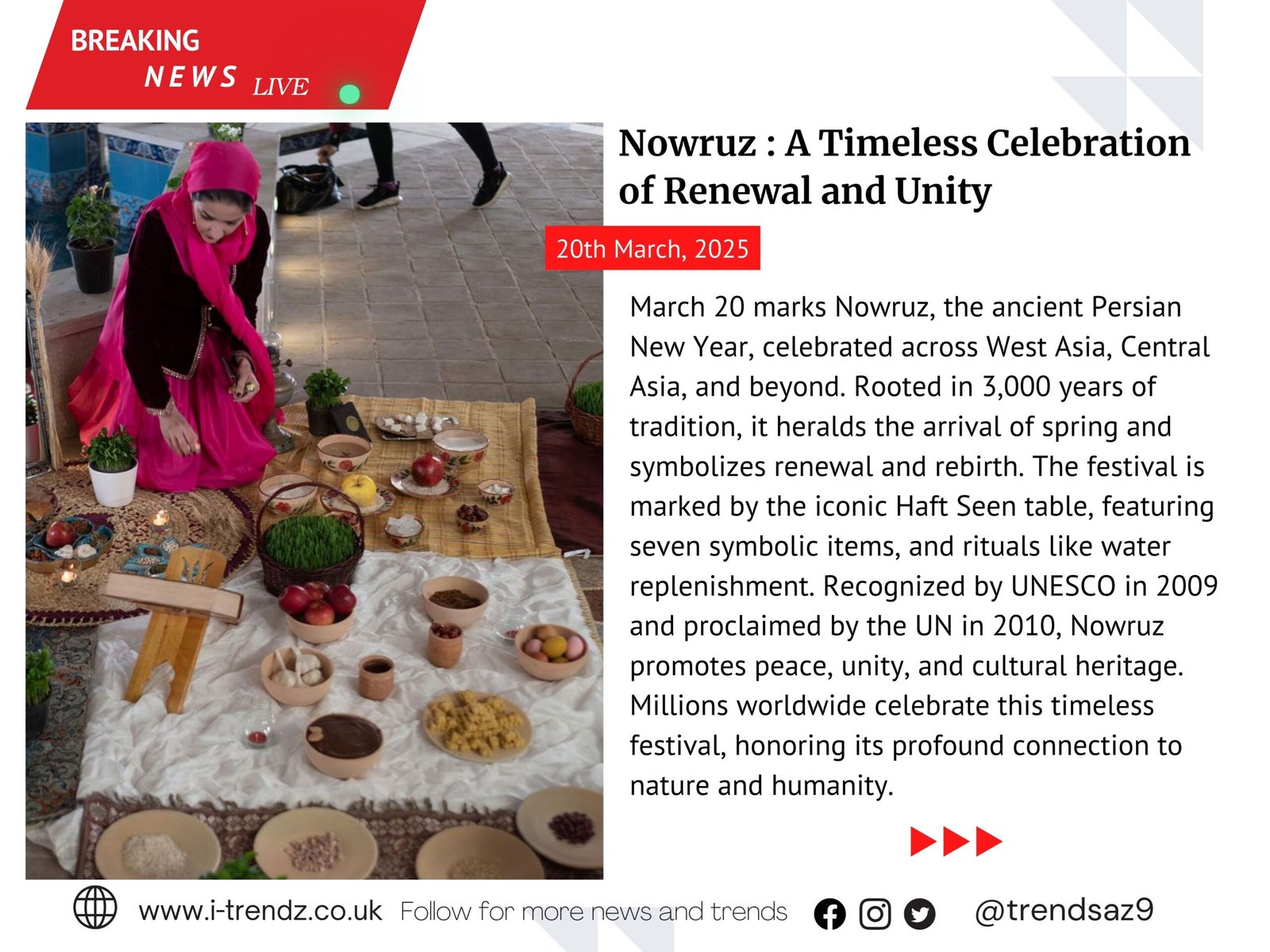Nowruz : A Timeless Celebration of Renewal and Unity
Nowruz is celebrated on March 20th, an incredibly ancient Persian/Iranian holiday that is observed by West Asia, Central Asia, the Indian subcontinent to some degree, and the Caucasus. Older than 3,000 years, Nowruz was an extremely significant tradition in the ancient Achaemenid Iranian Empire and the Zoroastrian religion, which had a strong sense of significance regarding the close connection between human beings and nature. This vibrant festival celebrates the advent of spring and vernal equinox, the symbol of rebirth, new life, and renewal. Nowruz, or “New Day,” is celebrated on the first day of the old Persian calendar, which coincides with the vernal equinox, the start of spring in the north. Nowruz is a tradition going back to the beginning of the new year and renewal of nature, back to the 6th century BCE, tells UNESCO. It has been so persistent, place-, and culture-forgotten only because it has been so eternally attractive, and its connection to Persian culture so great even after so many decades. One of the most symbolic Nowruz traditions is the preparation of Haft Seen table, an Iranian work of art in houses on Nowruz day.
It has been clarified by the United Nations that it is done well with seven items representing various qualities of things in nature and life, beginning from the Persian alphabet letter “S” (Seen). For example, Sabzeh (cereals which have sprouted) symbolize renewal and rebirth, and other objects such as Sib (apples) symbolize beauty and health. The Haft Seen table is not merely a pretty picture but also an extremely symbolic celebration of hope, gratitude, and cycle of life. Water forms a part of Nowruz ceremonies as well. Some cultures replenish their water on the second-to-last Wednesday of the year, a ritual which bears witness to the cleansing and renewing properties of water. The ritual bears witness to the close linkage of the celebration with nature and its role as cleansing and renewal. Nowruz was able to endure even after wholesale transformation was introduced by the Arab Muslim conquest of Greater Persia in 651 AD.
Also Read : Ben & Jerry’s Icecream CEO Fired Amid Social Mission Clash
Nowruz’s survival is proof of Nowruz’s integration into Iranian identity and culture.
Quoted in Encyclopaedia Iranica, Nowruz survived because it was incorporated into the Iranian tradition, history, and collective memory matrix.The formation of a distinct Persian Muslim community, particularly during the Safavid era, acted to further solidify Nowruz so that it could endure in minimal form.It is now a coming together of Iran’s Islamic future and pre-Islamic past, as well as continuity of Persian customs. Nowruz was recognized by UNESCO in 2009 when it placed it on the Representative List of the Intangible Cultural Heritage of Humanity. It was intended to emphasize the significance of the festival as a means of promoting intercultural conversation and cultural exchange between different societies. In the hope of such an accolade, the United Nations General Assembly of 2010 declared March 21 as International Day of Nowruz and asked the people across the globe to observe remembering themes of renewal, unity, and peace.
Nowruz is more than a new-year greeting; it is an appeal for hope and harmony by all. It is an appeal to our shared humanity and sense of being in the world, an appeal for new beginnings and to a better world. As millions celebrate this timeless tradition, they celebrate an inheritance that has weathered centuries, keeping people and generations together in common celebration of life.



